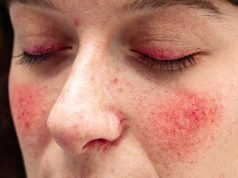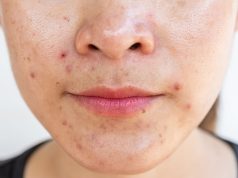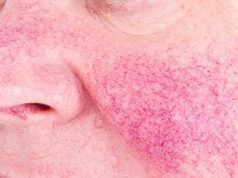Significant decrease in most criteria of rosacea Duluth score in patients cured of H. pylori infection
MONDAY, May 8, 2017 (HealthDay News) — For patients with concurrent rosacea and Helicobacter pylori infection, use of standard H. pylori eradication therapy is associated with improvement in rosacea, according to a study published online April 27 in the Journal of Dermatology.
Parviz Saleh, M.D., from the Tabriz University of Medical Sciences in Iran, and colleagues examined the effect of standard eradication of H. pylori on the clinical course of rosacea in a single-arm trial. Patients ascertained to have H. pylori infection based on serological studies were assessed for rosacea. Patients with concurrent rosacea and H. pylori infection were recruited and treated with standard H. pylori eradication therapy. At the start of the trial, two months later, and at day 180 (end of the trial), rosacea was evaluated using the Duluth rosacea grading score.
A total of 19.15 percent of the 872 patients positive for H. pylori manifested the clinical features of rosacea. The researchers found that compared with rosacea-free patients, patients with concurrent rosacea were younger (P < 0.001), with female sex predominance (P = 0.03). Overall, 150 of 167 patients received H. pylori eradication therapy, with a 92 percent cure rate. On day zero, 60 and 180, the rosacea Duluth score grading decreased significantly among patients cured of H. pylori infection in most of the criteria, except for telangiectasia (P = 0.712), phymatous changes (P = 0.535), and the existence of peripheral involvement (P = 0.431).
“The present study concluded that H. pylori eradication leads to improvement of rosacea,” the authors write.
Copyright © 2017 HealthDay. All rights reserved.








